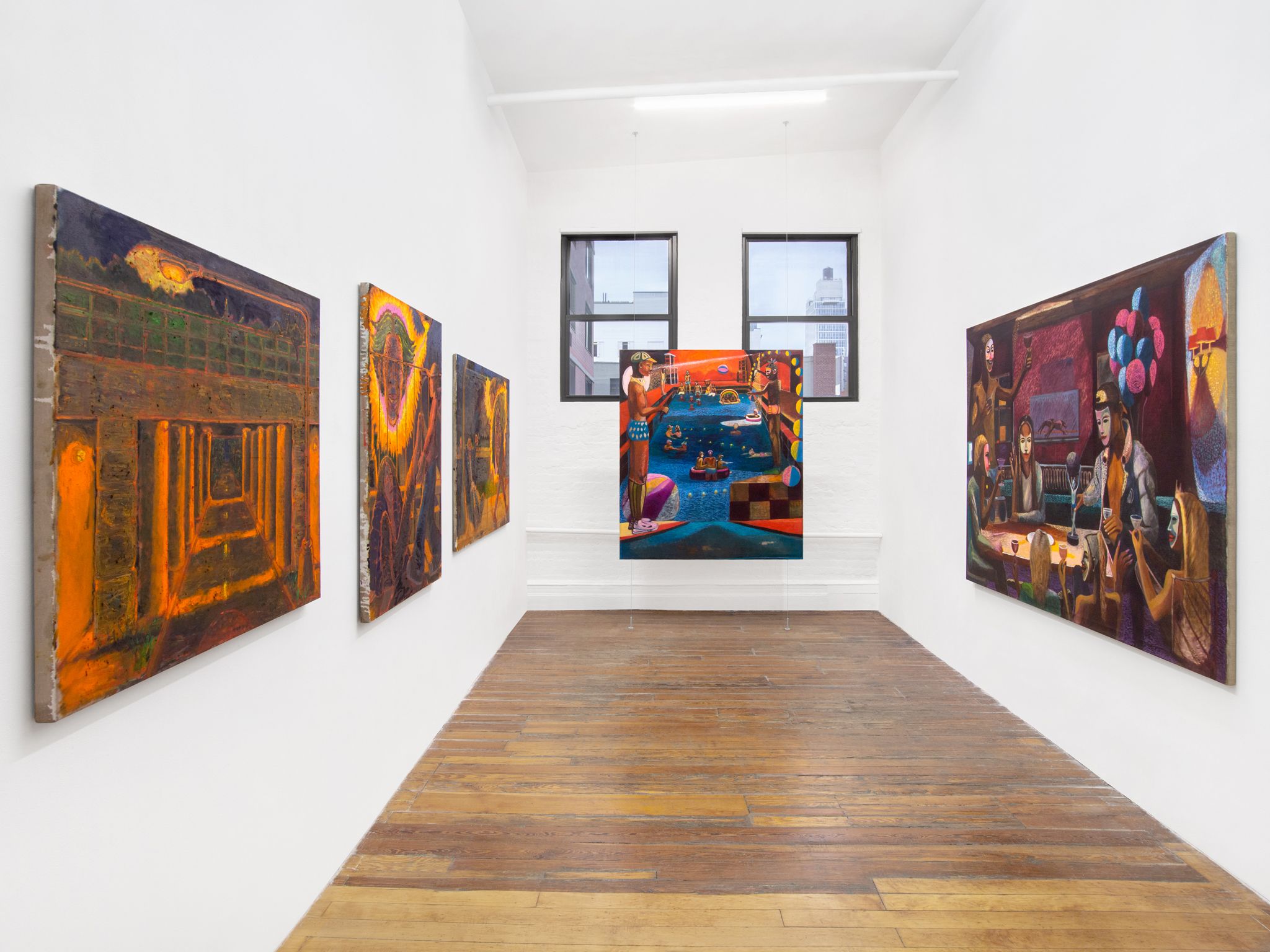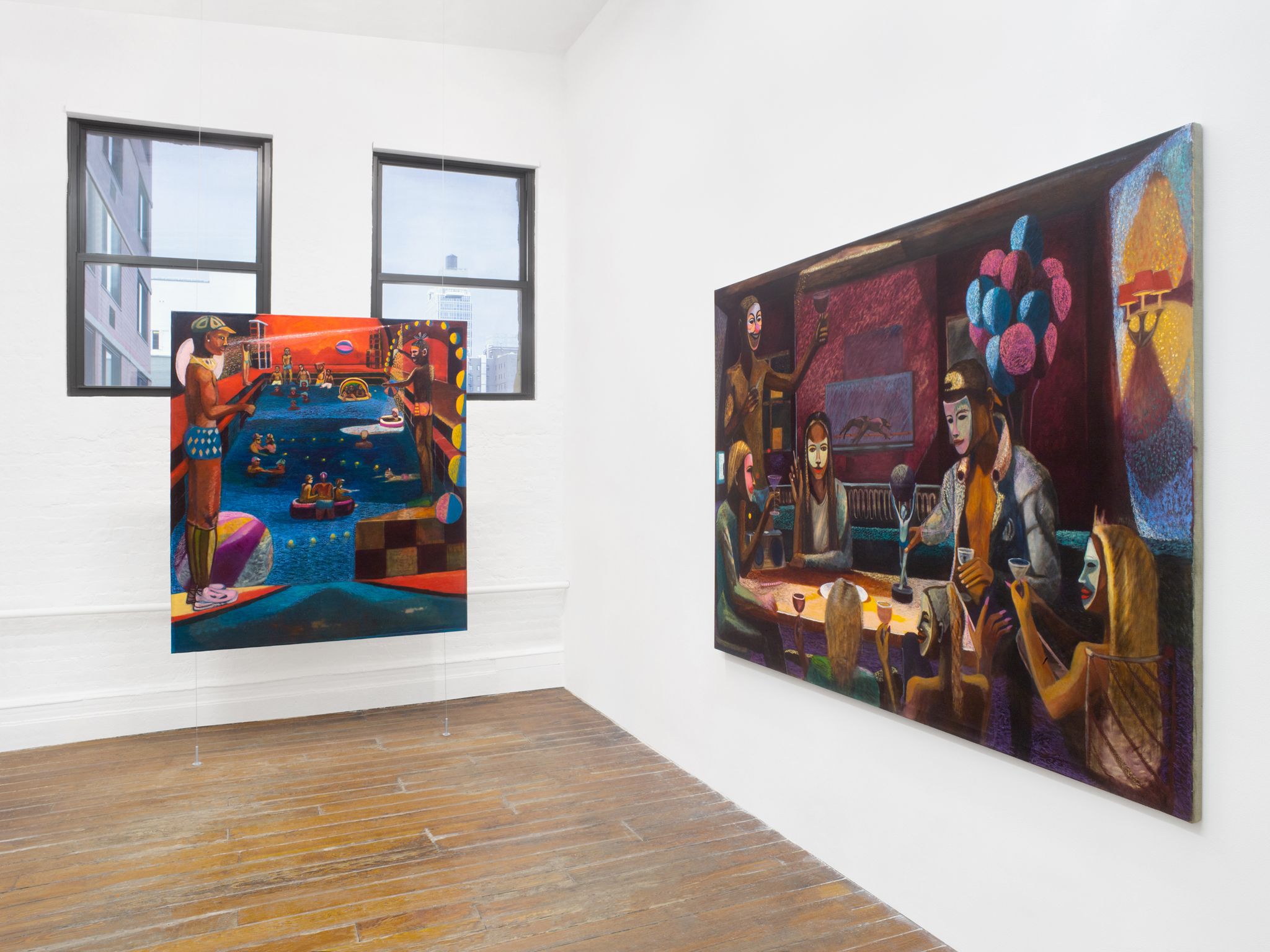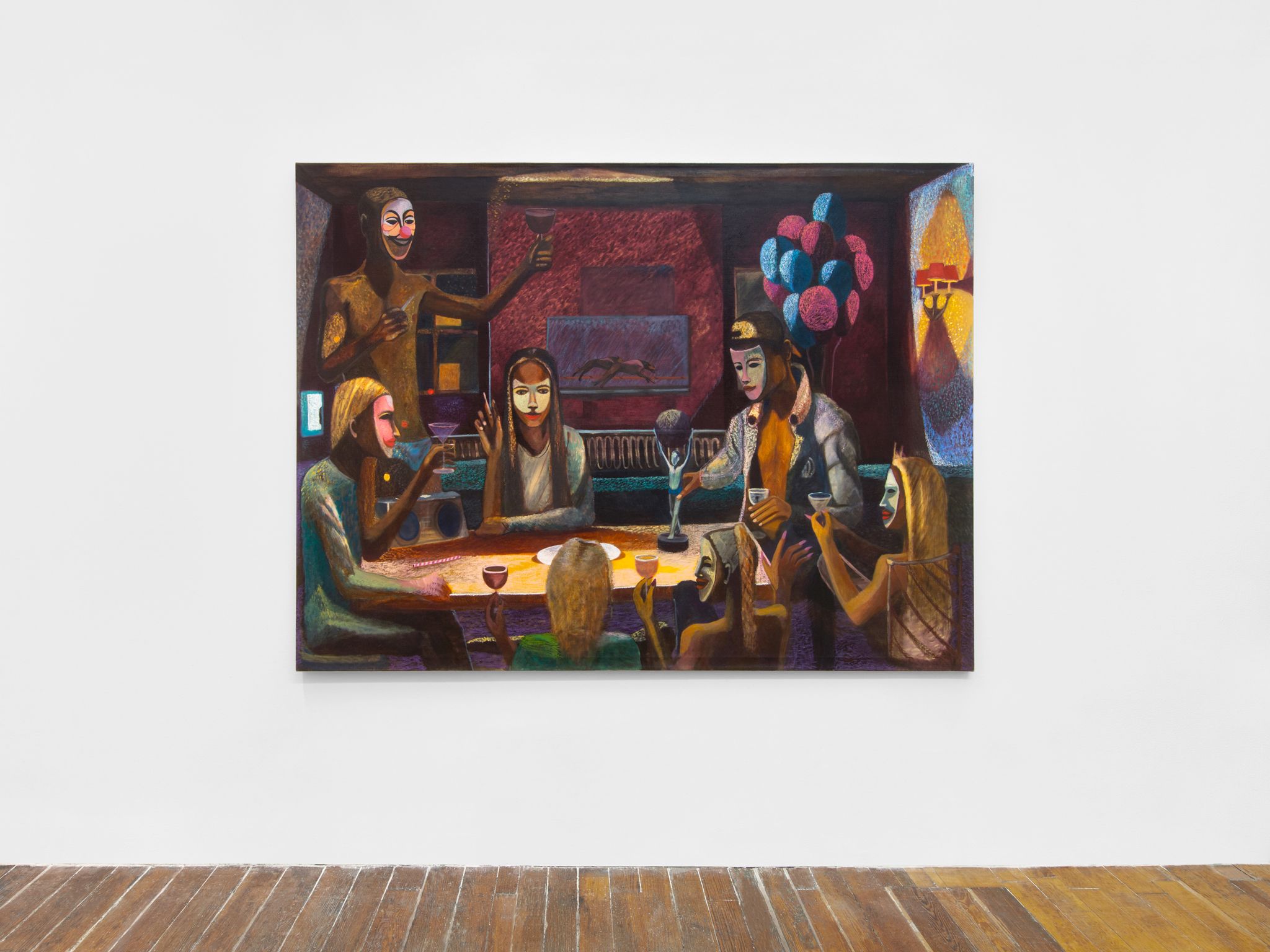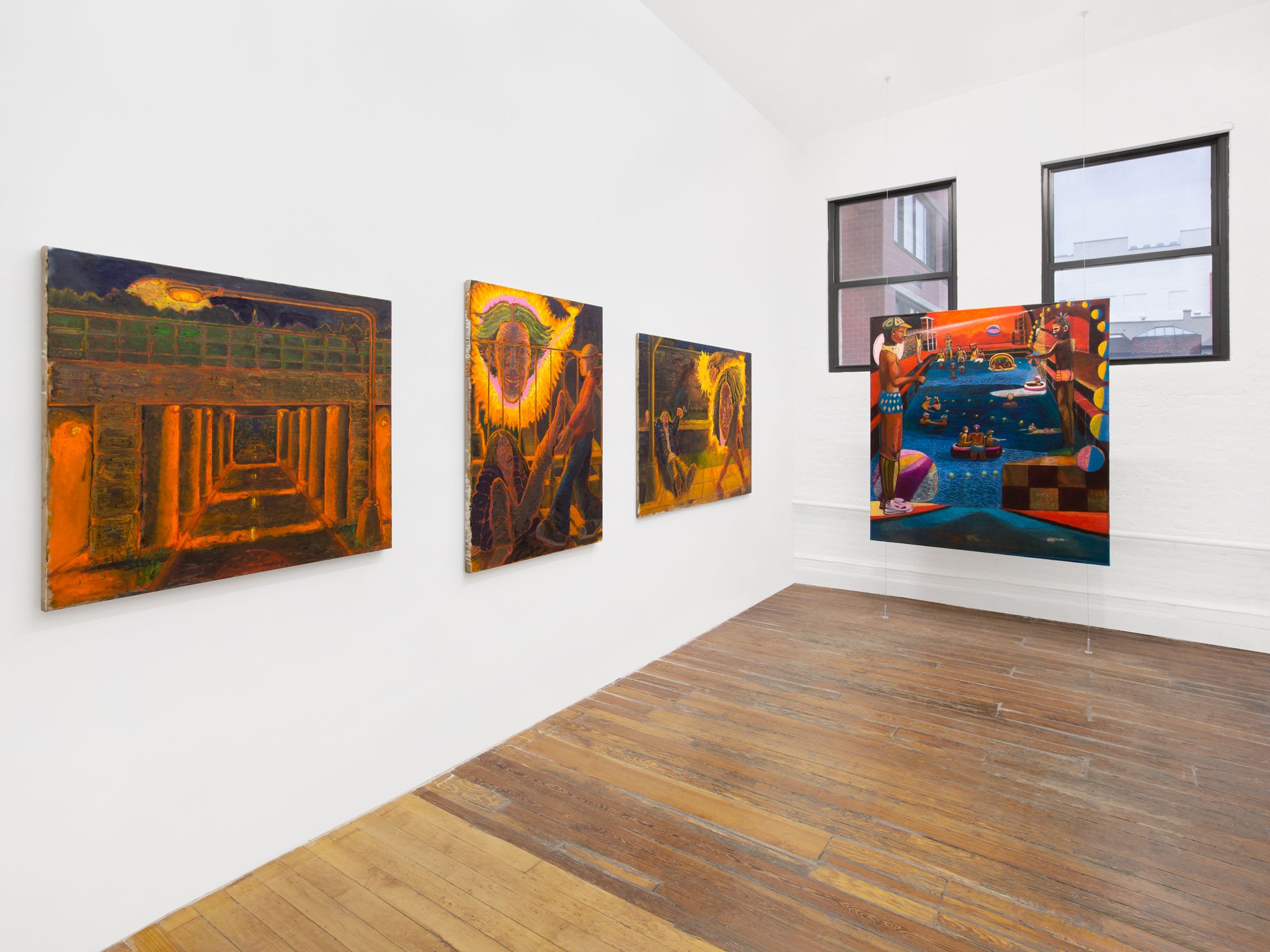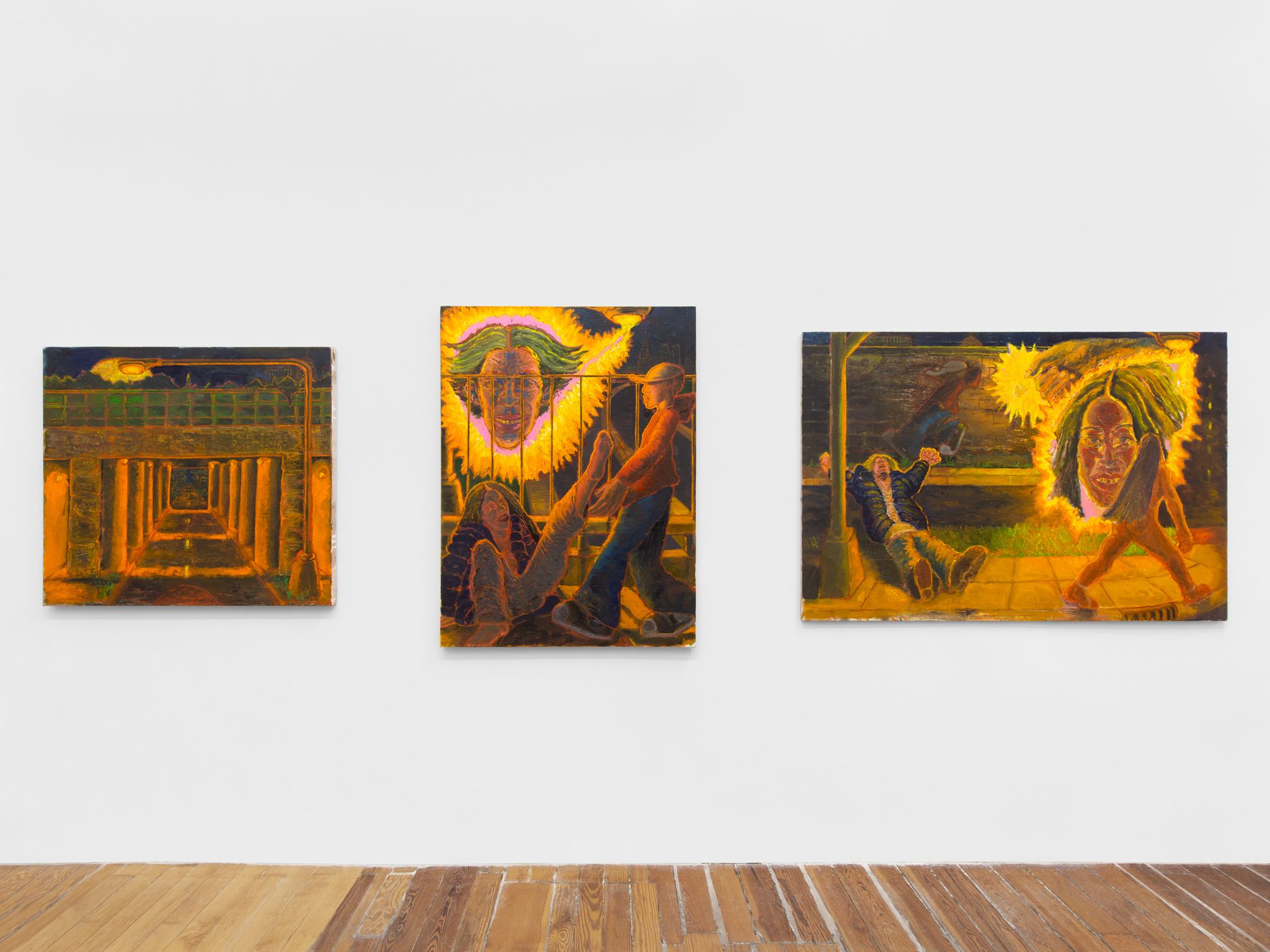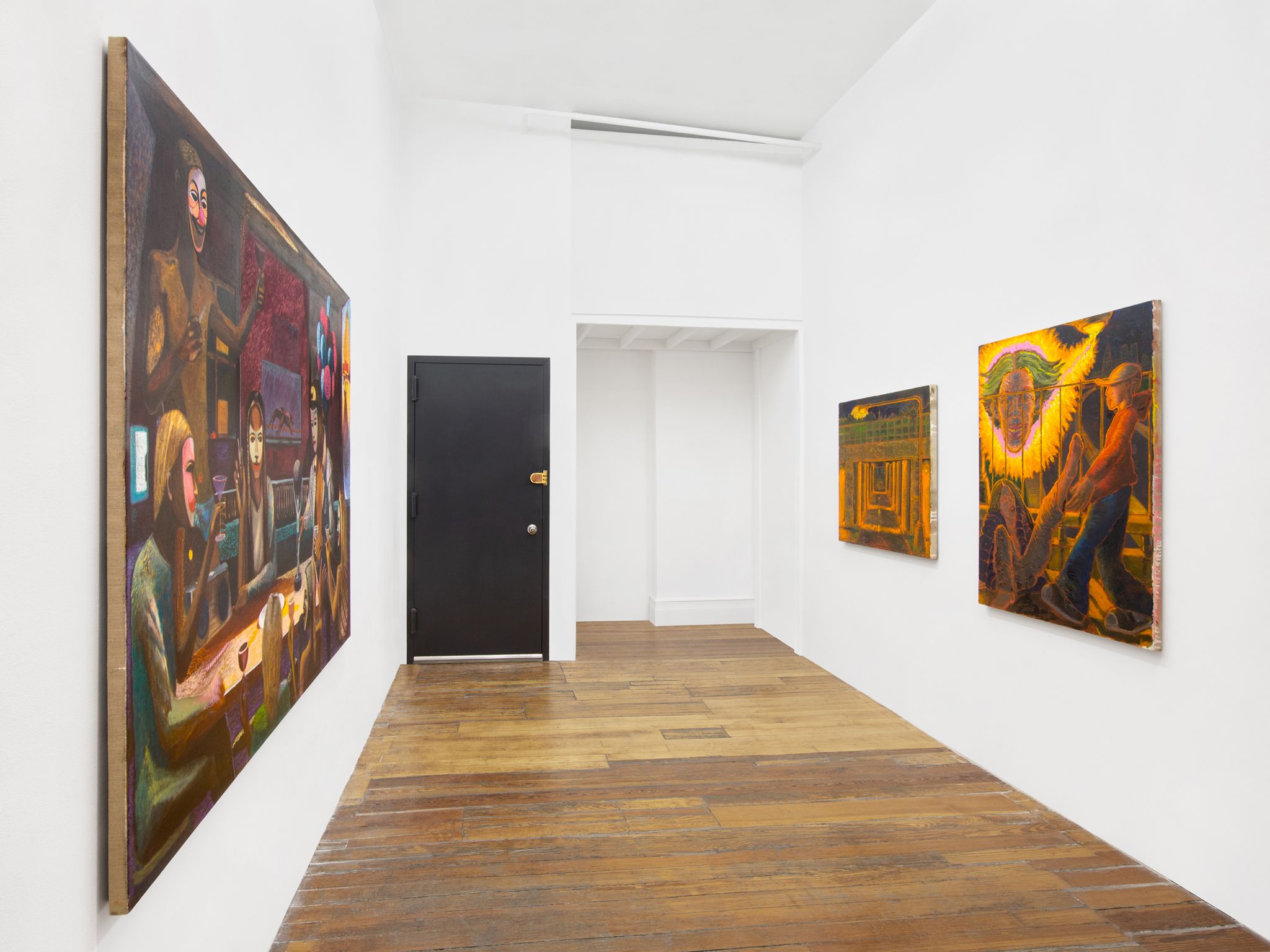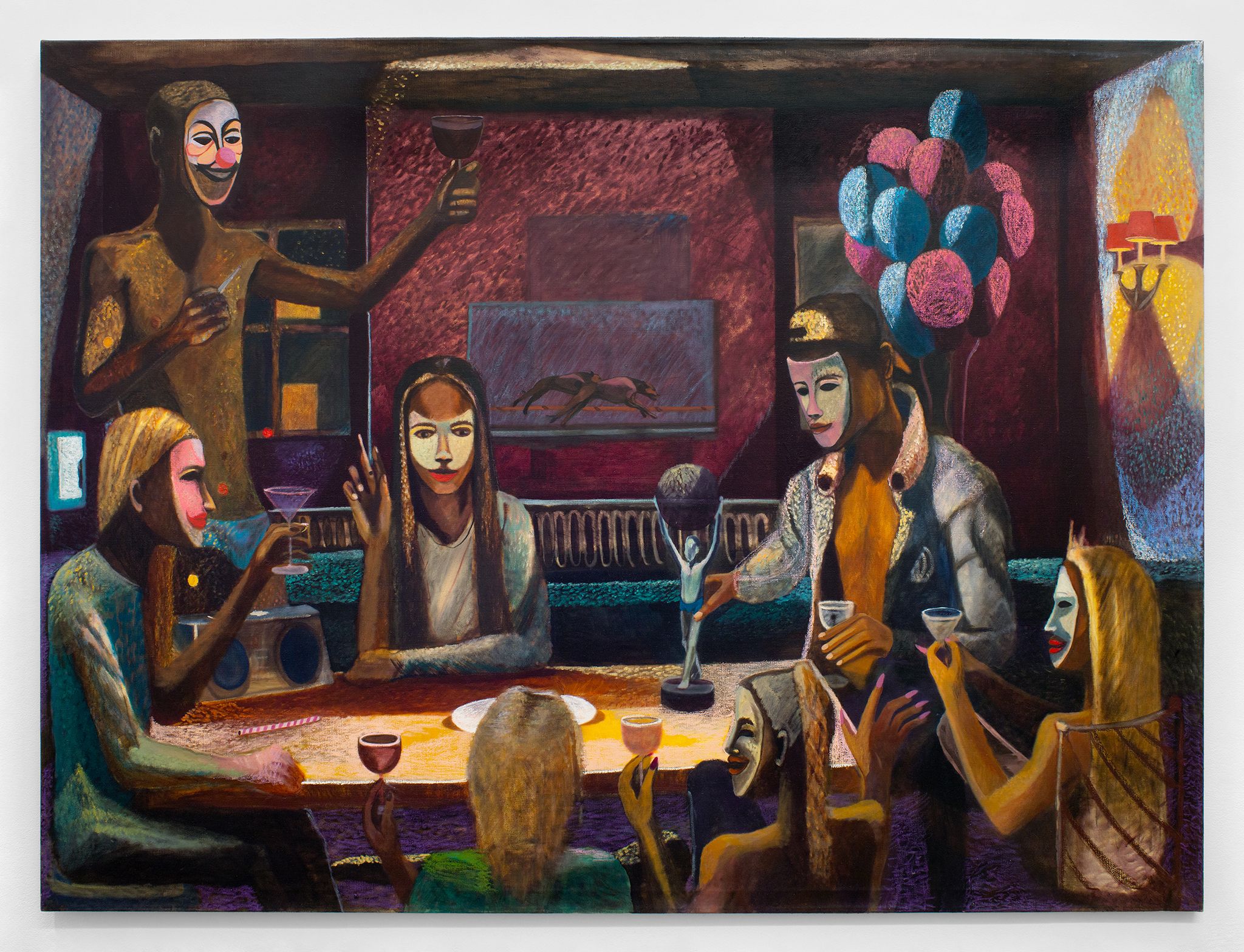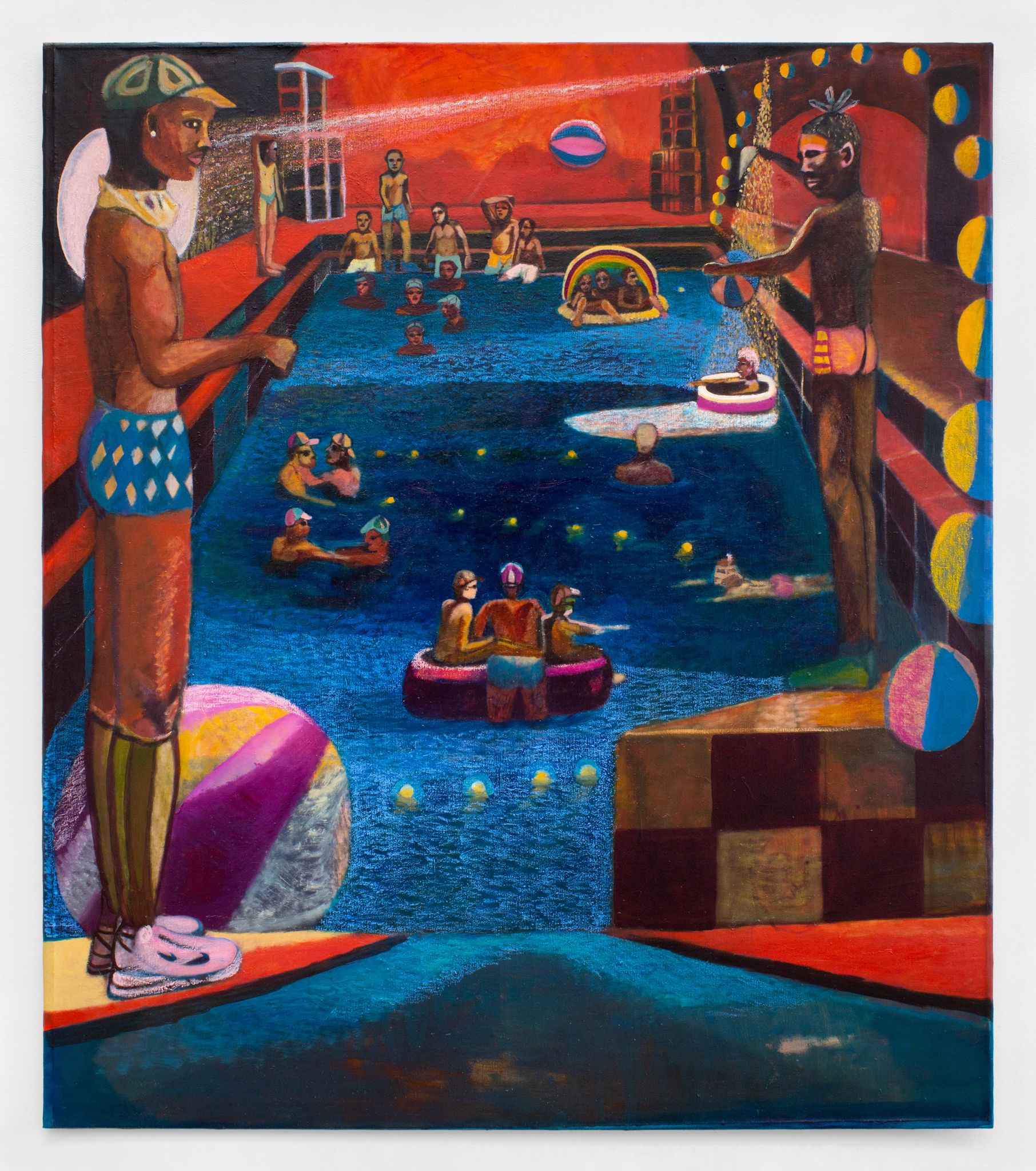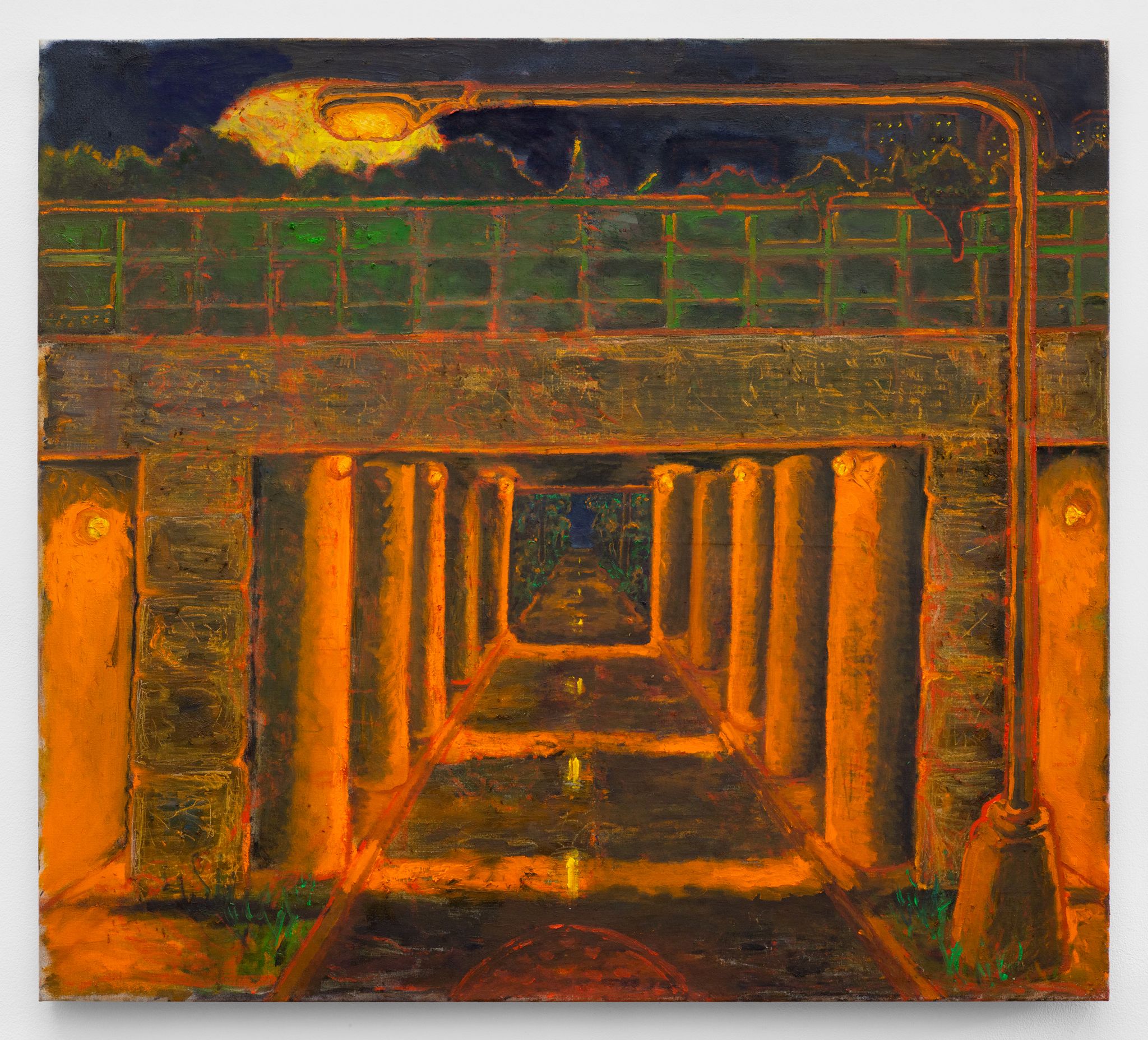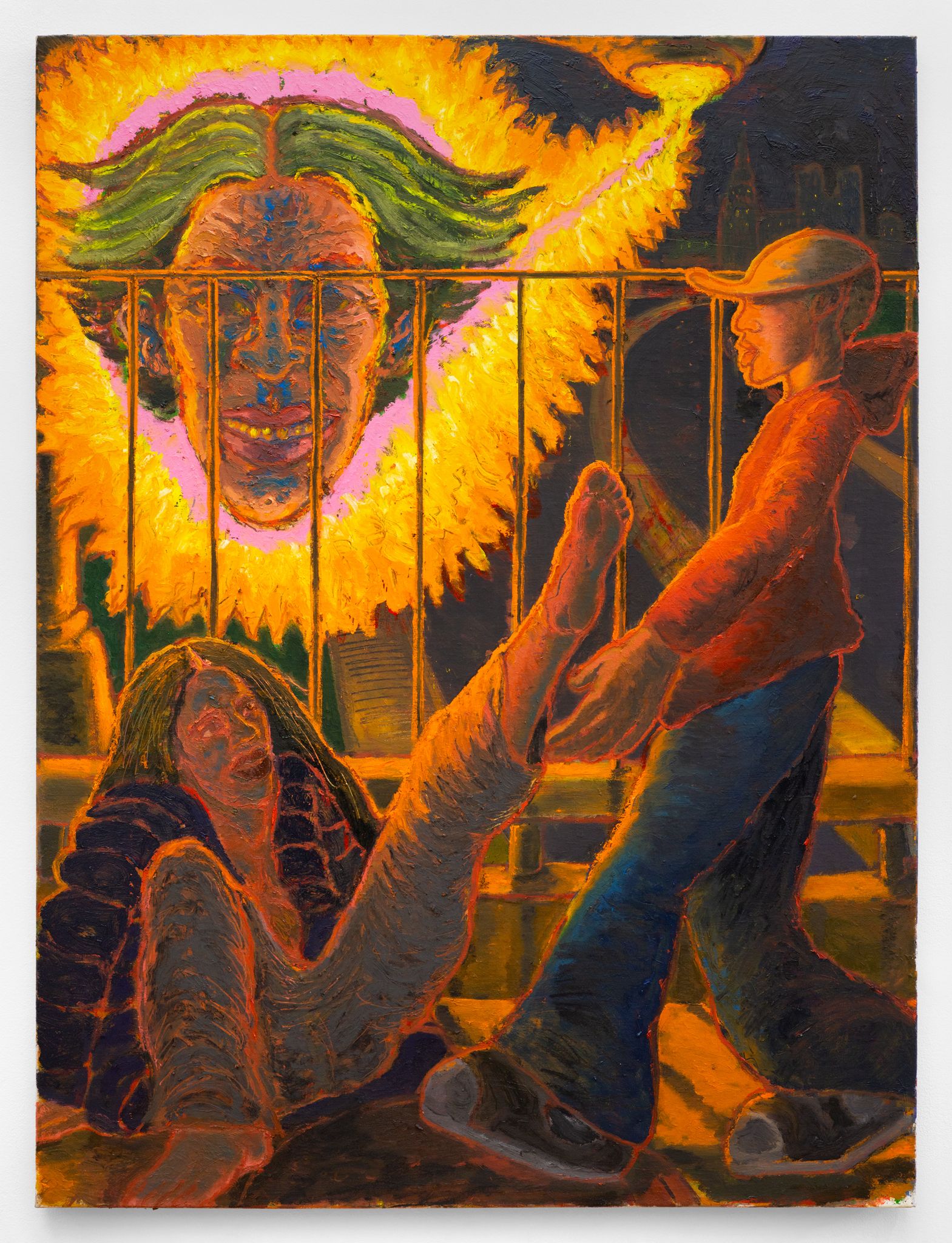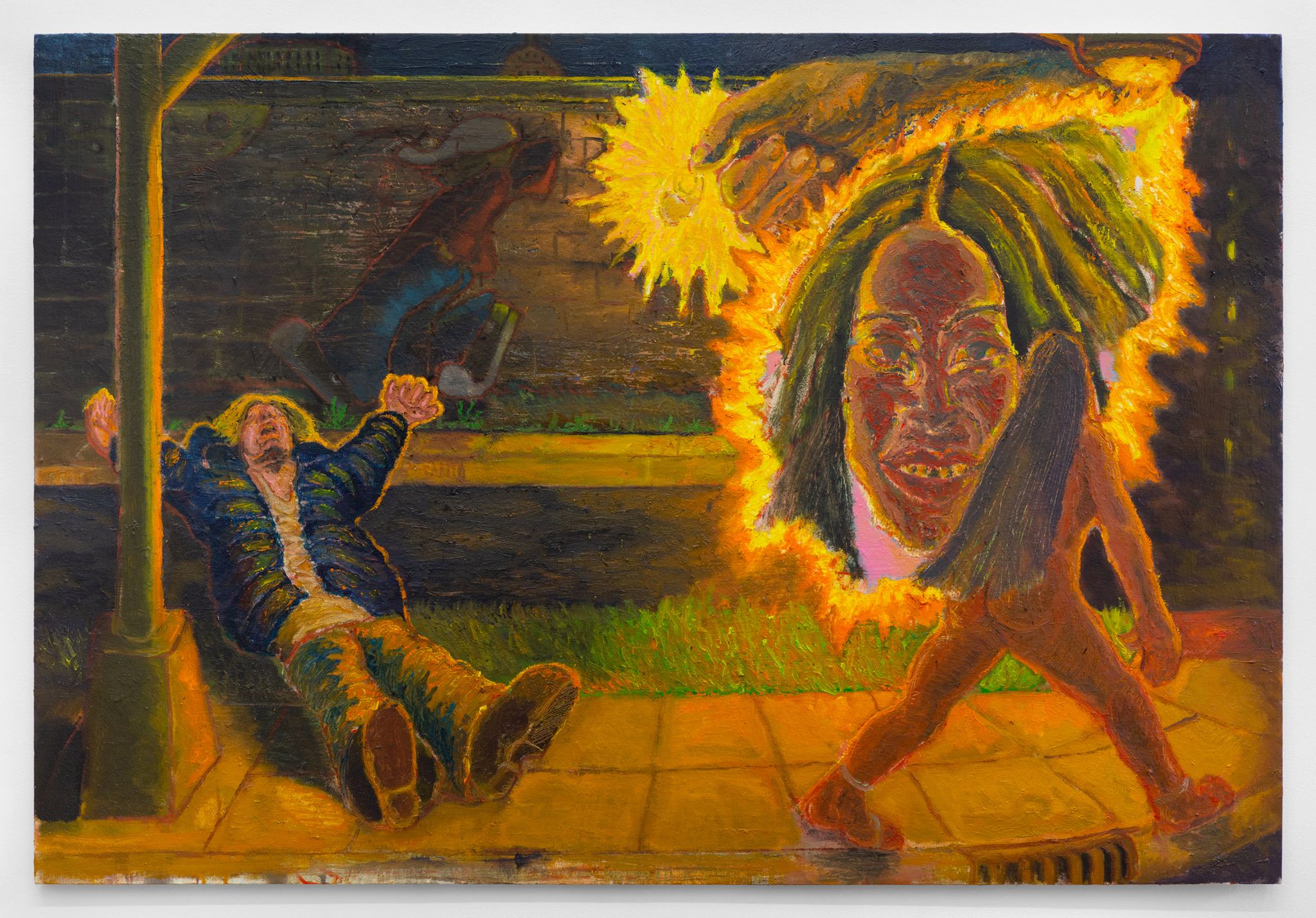Do you remember this, summer nights as they used to be? Smoking and drinking martinis around a table in a once plush, now well-worn old bar, or voguing in the spotlight with powder blue stiletto nails. Cruising at the bathhouse under a pink and blue-segmented beach ball that hovers like a plastic moon. Channeling incandescent aggression or ecstasy, passing out under a streetlight, and getting an earful from your ancestors as the sun rises. Rivulets of sweat and drool and delirium; ankle straps and rictal grins. Being together not because you particularly want to but because you can, and maybe it feels okay in the moment too.
Humidity blooms through these canvases like a quickly-furring mold. Despite their very different painterly approaches, nighttime, for both these artists, is a kind of showtime. In Ryan Huggins’ interiors, queer sociality mingles with the comfortable warmth of easy camaraderie. Everything is a little dusty, a little musty, and hard lit figures shimmer like dustmotes. The paintings draw from his childhood in Port of Spain, Trinidad and Tobago—like the Carnivalesque harlequin masks worn by some subjects—and his current city of Düsseldorf, Germany, as well as the curious experience of immigrating eastwards to settle down in the West. Their surfaces suggest a texture something like shorn velvet which, along with the dark, saturated palette and the hard lighting, contributes to the theatrical, tableau vivant effect. There’s glamor, yes, but other quieter performances of identity too: inhabiting a racialized, queer body, or jumping through hoops as an immigrant—learning to balance a beach ball on your nose on command.
In Jacob Mason-Macklin’s street scenes, muddied neons buzzing feverishly through the thickly applied paint. (Why bother taking off last night’s makeup when it’s going to melt and slide off anyway?) They bespeak a particularly American postindustrial terroir and the unyielding grind of factory life from his Rust Belt hometown of Columbus, Ohio, as a bridge to the New York City neighborhood Ridgewood, where he now lives. Here, it is the sidewalk that becomes a stage for the drama of blue-collar life, starring a cast of characters both familiar and strange. Bodies and limbs overlap, and appear like visions in the light. The figures seem to thrum like a science class diagram of solids furiously vibrating their way into liquids and gases. But the phrases they conjure up are curiously French: Arthur Rimbaud’s “violent presentiment of setting sail”, and the iconic first lines of another text: “Everyone agrees. It’s about to explode.”
—Rahel Aima
